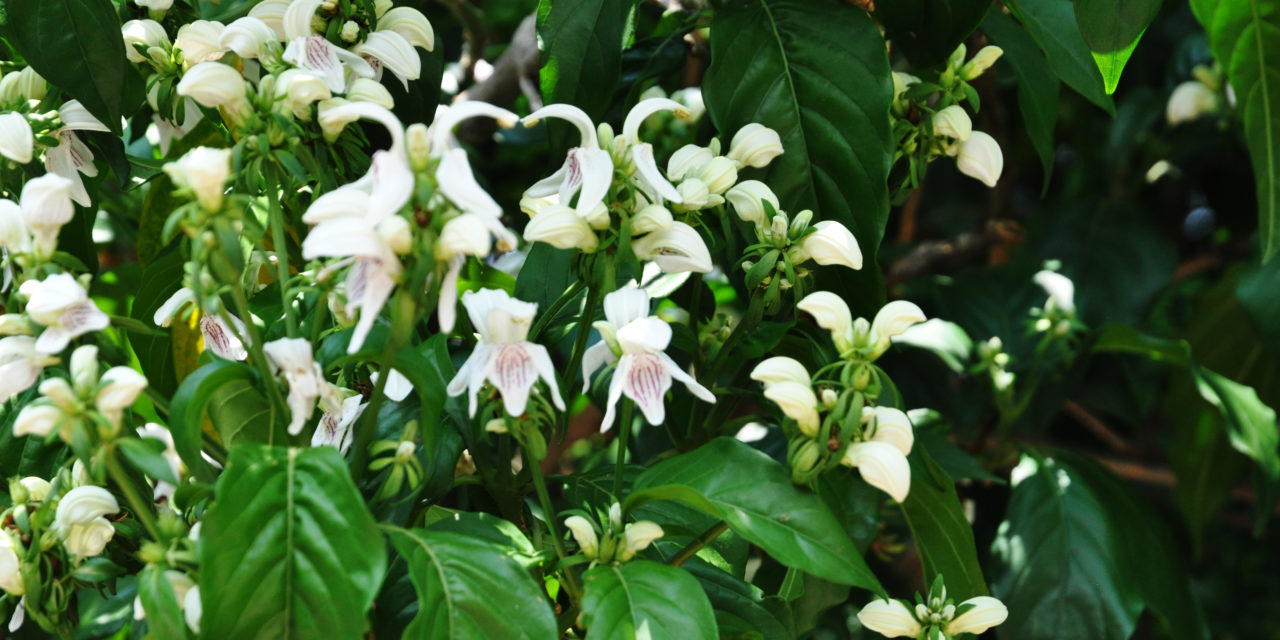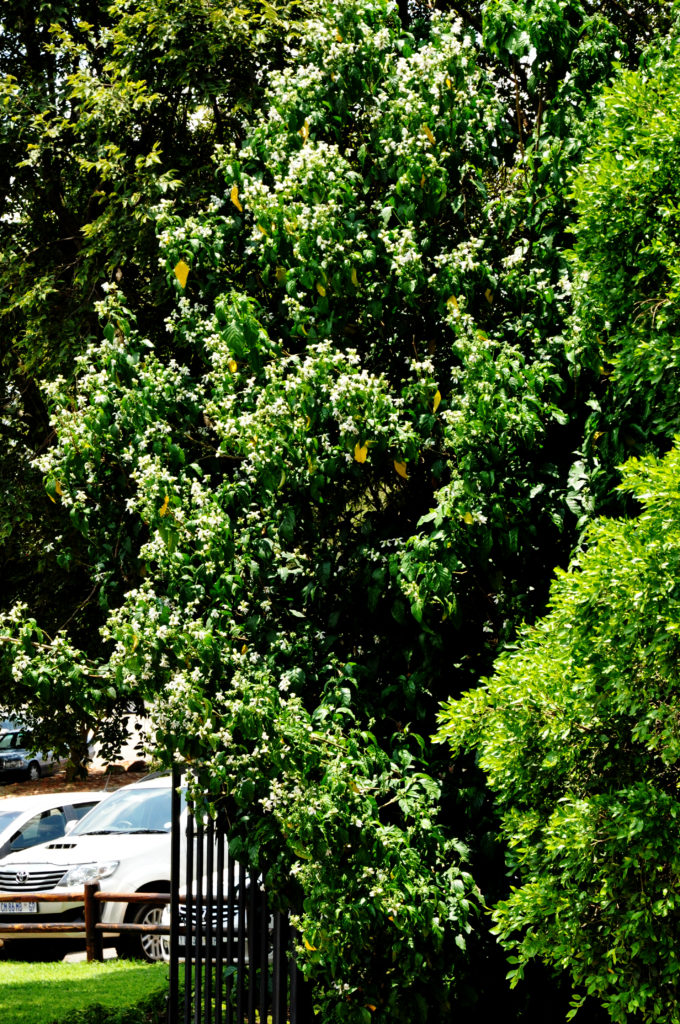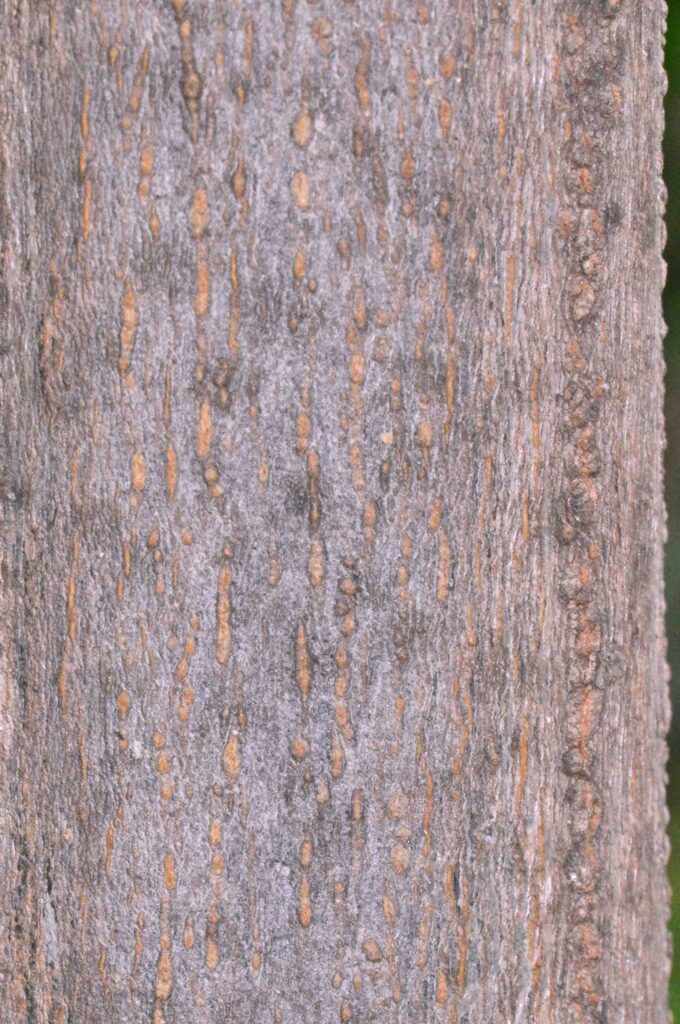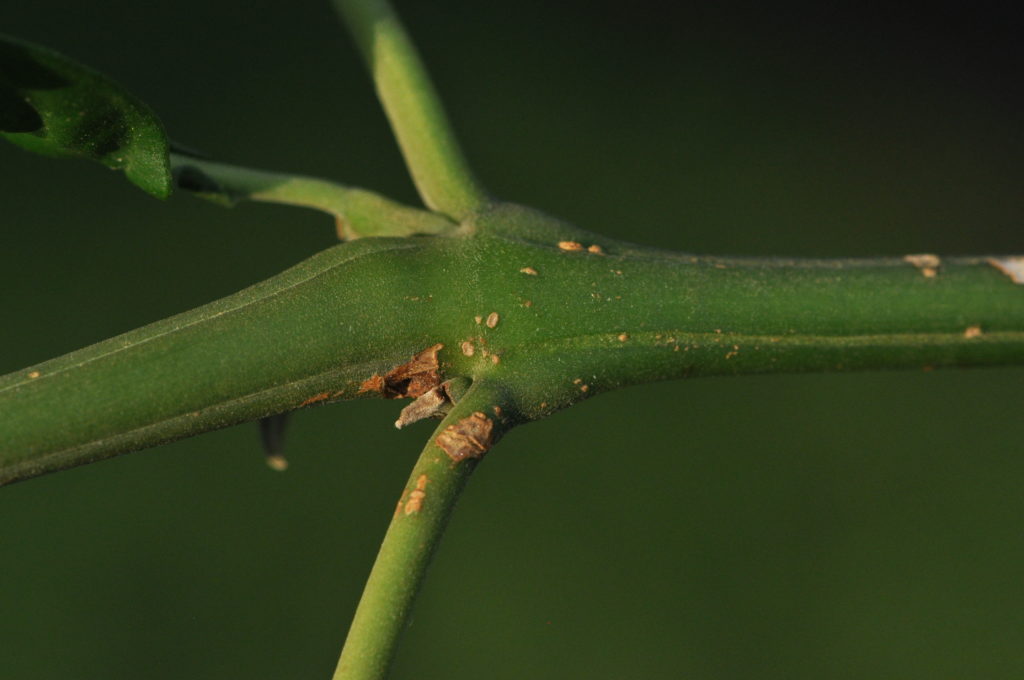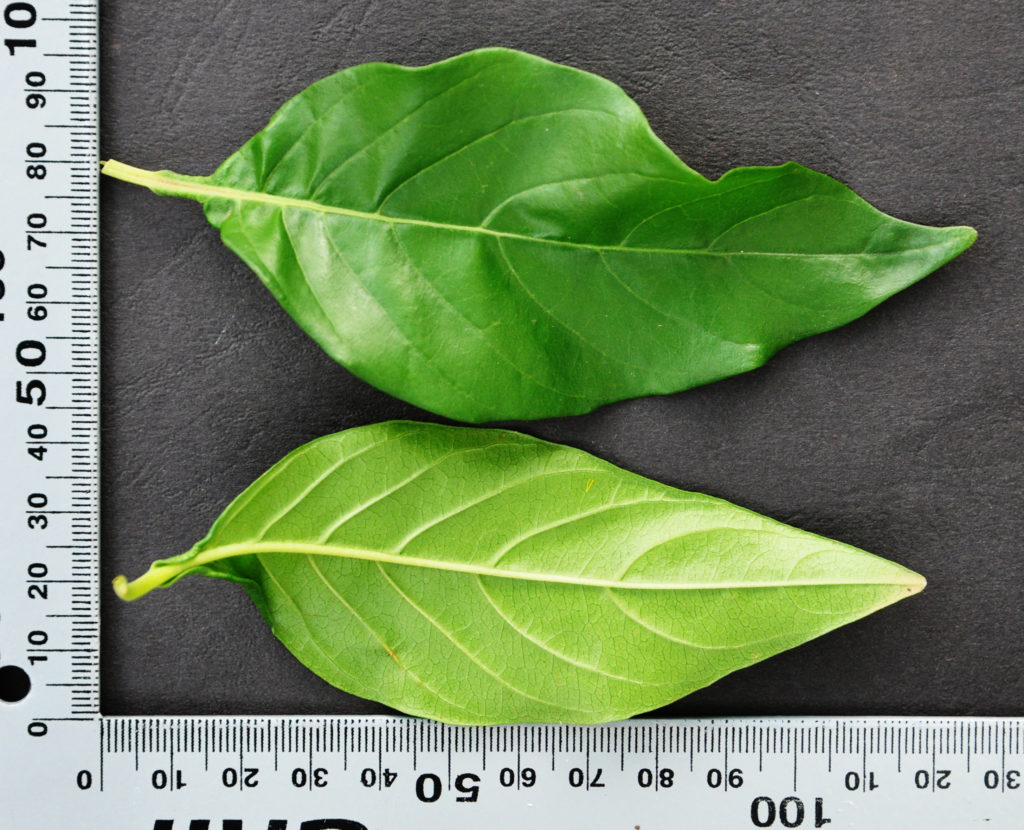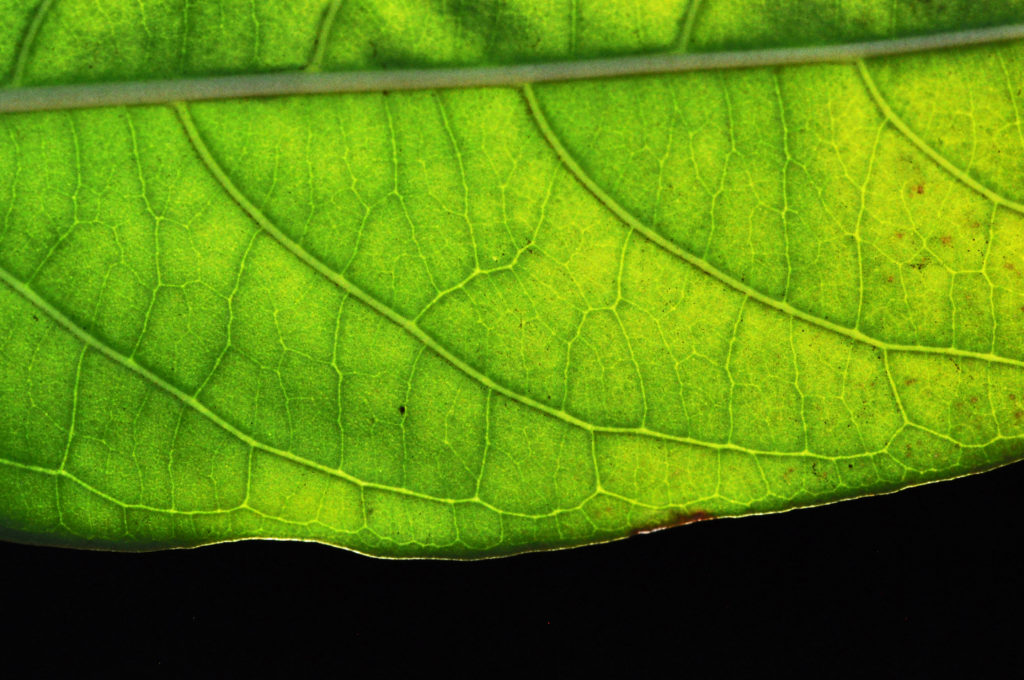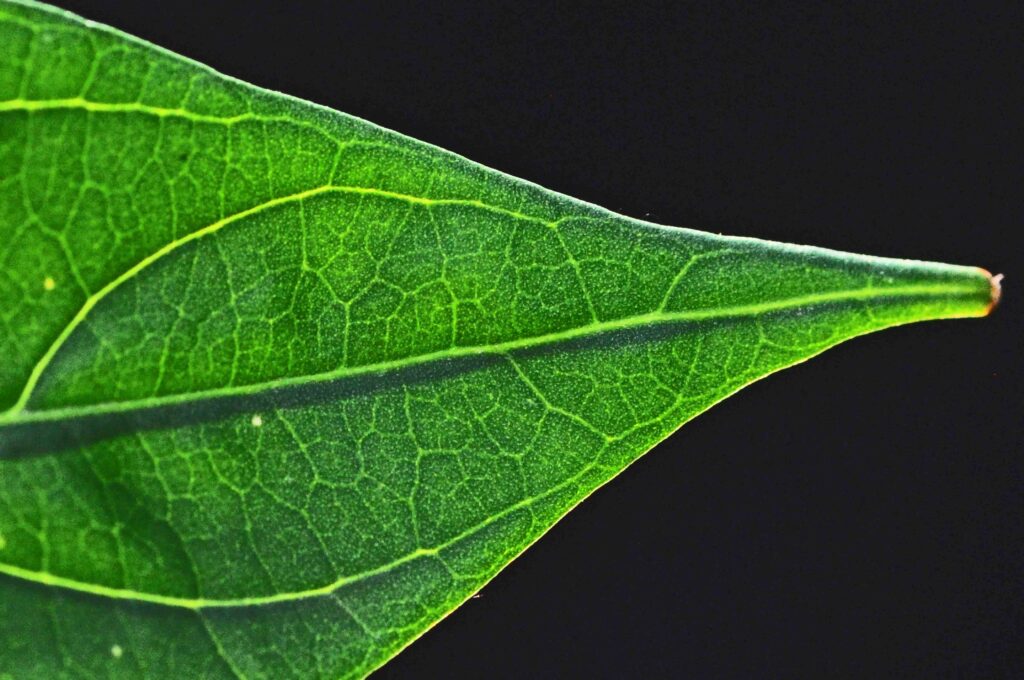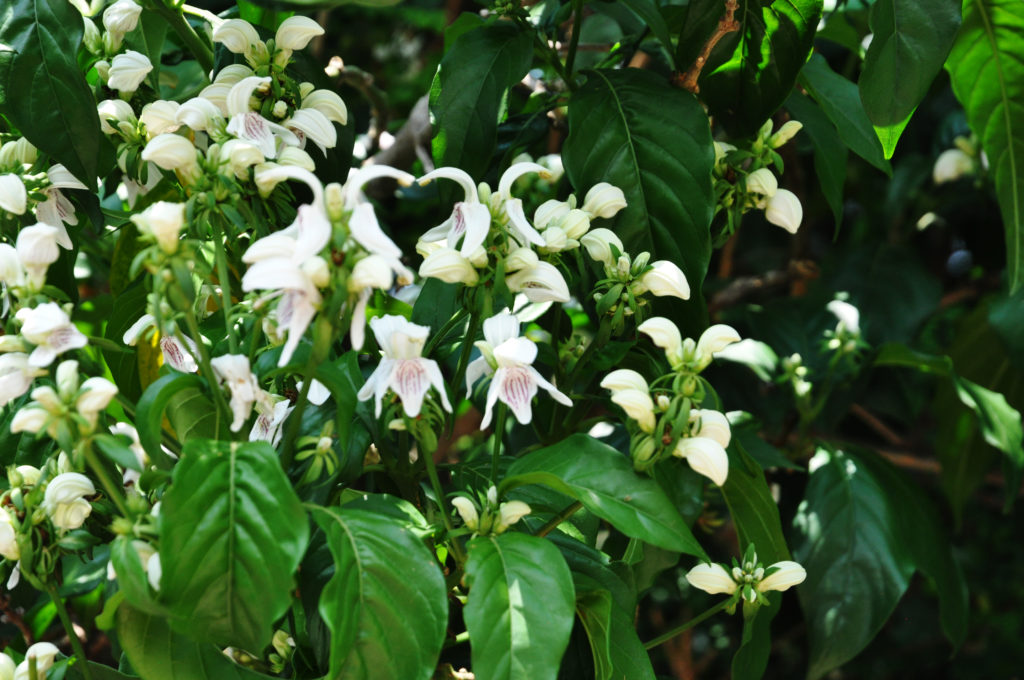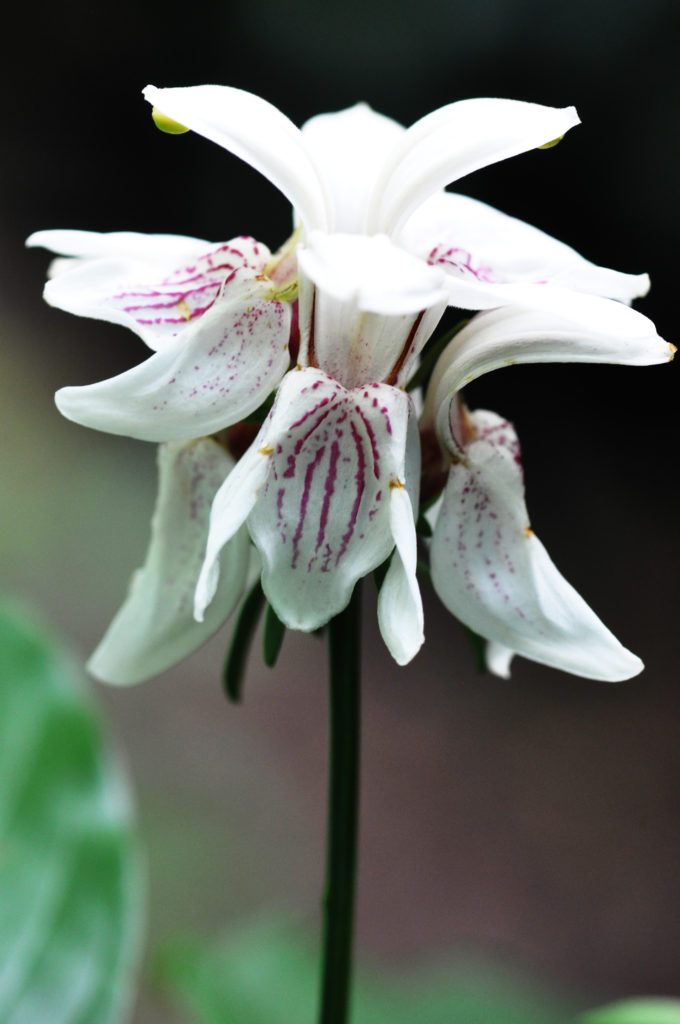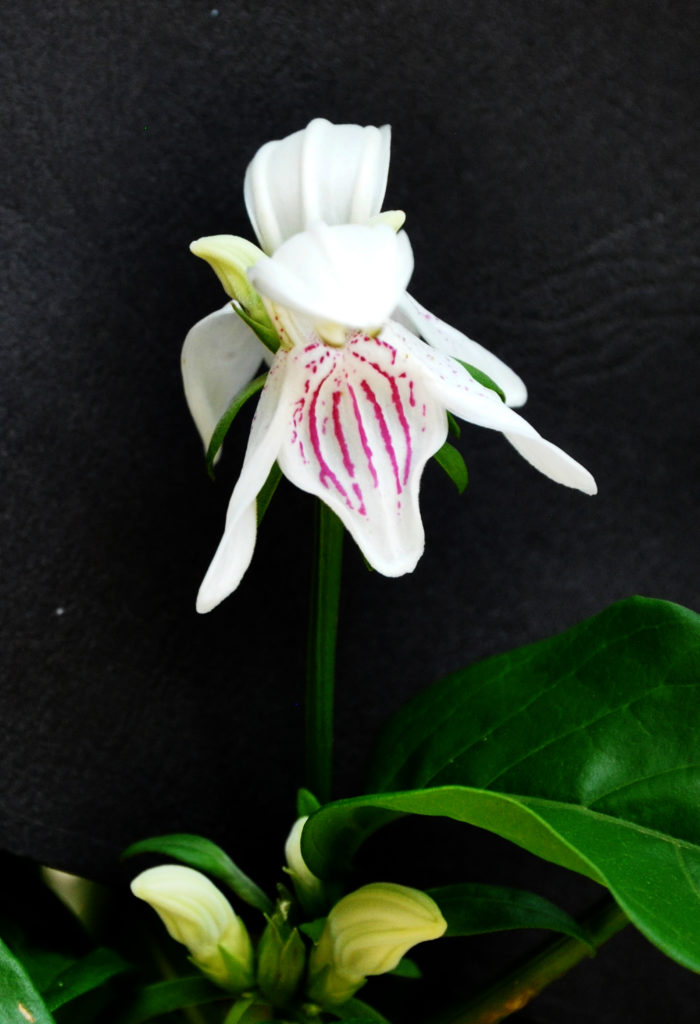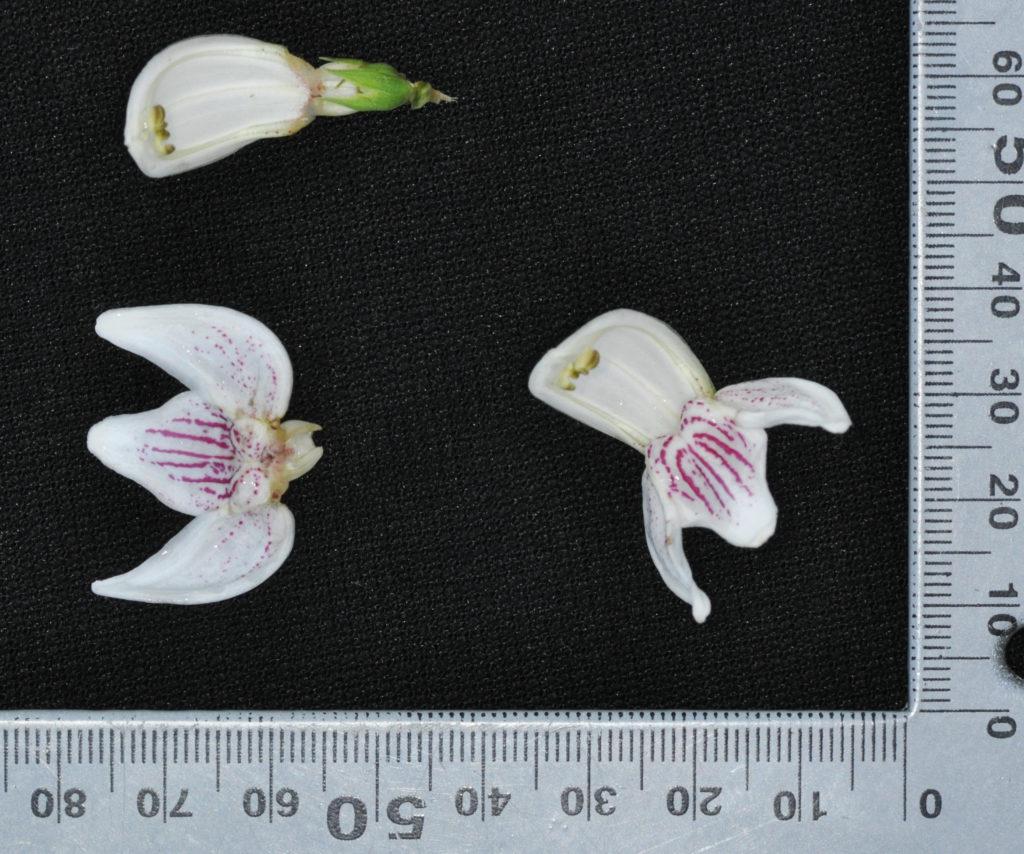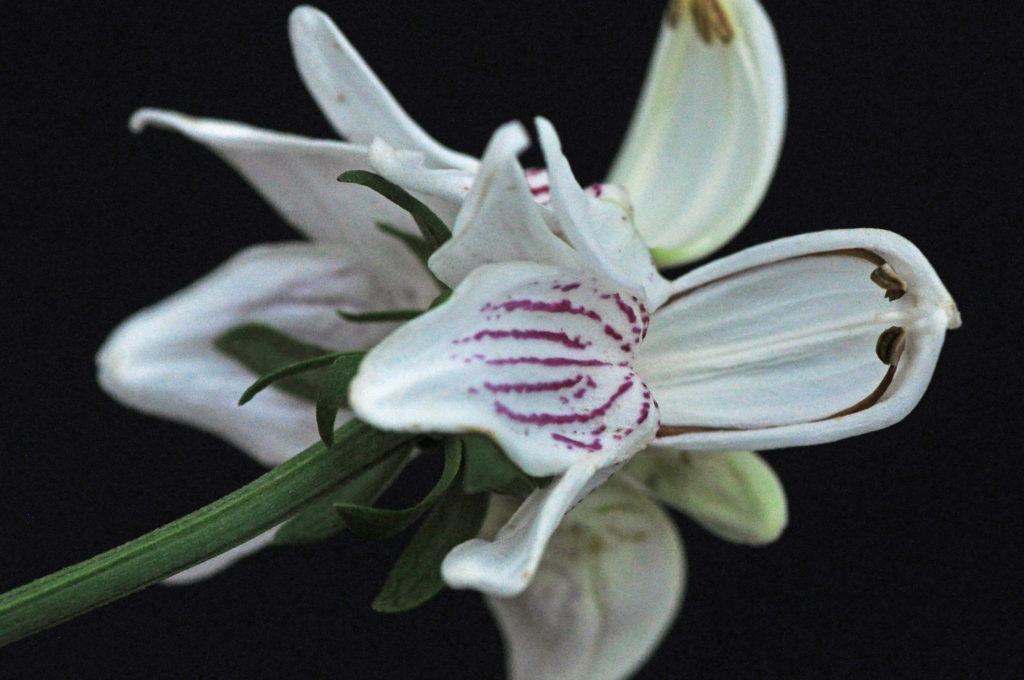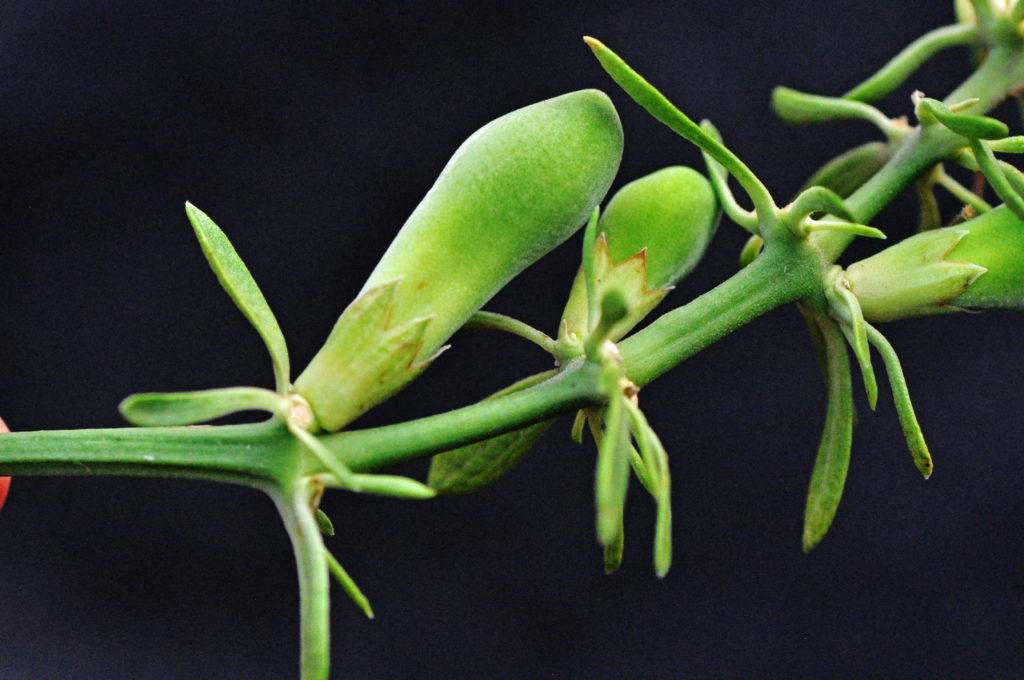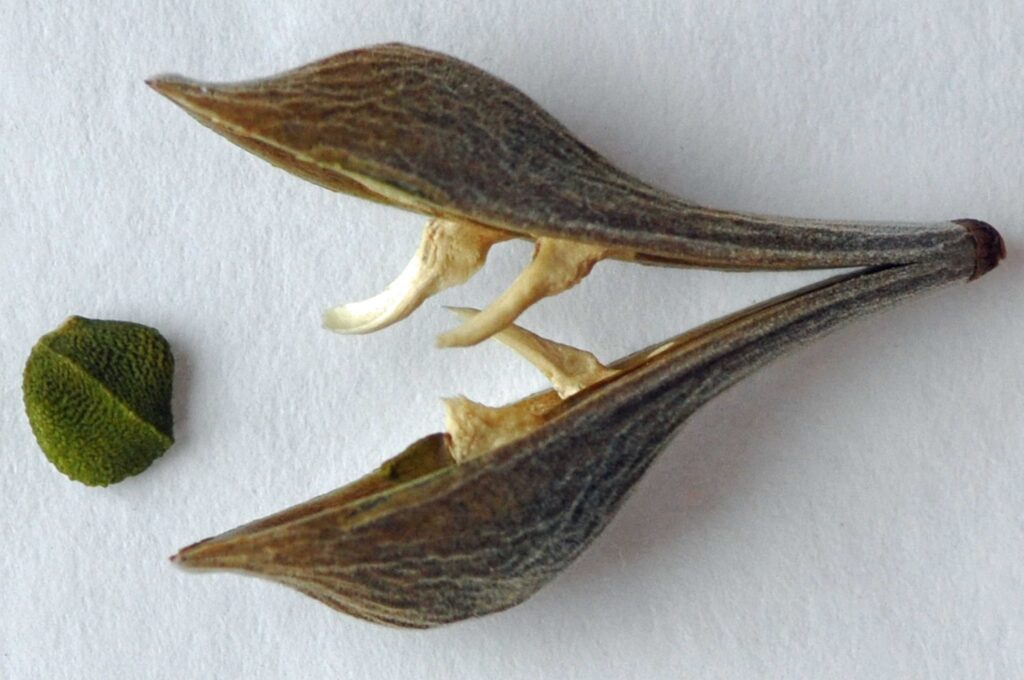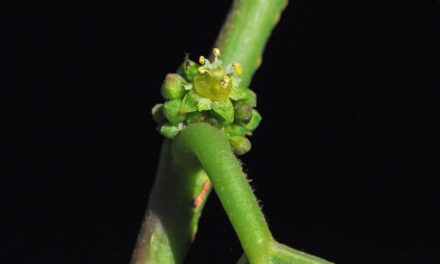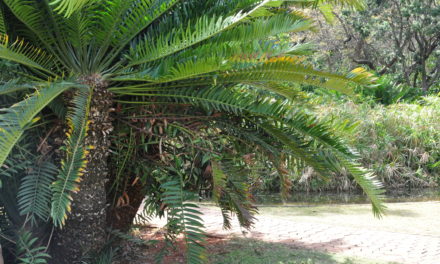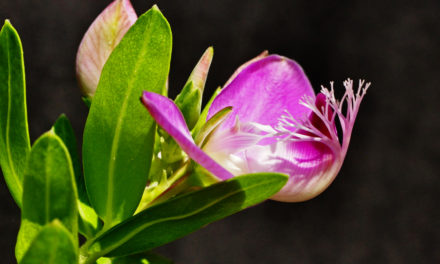General Info – summary
This sturdy shrub or small Tree is up to 6m high with brittle branches. The simple, decurrent Leaves are up to 23 x 15cm and have an entire margin. The large abundant white zygomorphic, bisexual, 5-merous, zygomorphic Flowers are in racemes with 2 stamens and a superior ovary – pollinated by carpenter bees. Fruit is an explosively dehiscent, club-shaped capsule, dispersing seeds each with 1- or more ridges.
Description
Justicia adhatodoides
Previous Names: Adhatoda duvernoia, Duvernoia adhatodoides.
SA Tree No. 681.
Common names: (Afr) Bastergeelhout, Pistoolbos, Pistoolbossie. (Eng) Pistol Bush. (isiXhosa) Isipheka, Ihlehlwe. (isiZulu) Isiisibika, Ihlwalane, Ulothaba, Umavutha, Usilwayo, Uthabe.
Family: Acanthaceae (The Acanthus family). This family has about 230 genera and 4 000 species. In southern Africa, there are about 42 genera and 350 species. All members have simple Leaves without stipules. They are mostly entire. Inflorescences are mostly bracteate – subtending each flower. The Flowers are usually zygomorphic, bisexual with a nectariferous disc. The calyx usually shorter than the gamopetalous corolla, which has 1-2 lips. 4 Stamens arising on the corolla are usually present. The superior 2-locular Ovary contains a large embryo. Fruit is 2-locular and Seeds lack endosperm. Local tree genera on this website include Barleria, Justicia and Mackaya.
Name derivation: Justicia – named after a Scottish horticulturalist/gardener James Justice, 1698-1763. This genus has many species but only some are in southern Africa. adhatodoides like the Asian plant Justicia adhatoda which is largely used in their local medicine. Jean François Drege (1794 – 1881) first collected this plant near Umtata in the Eastern Cape.
Conservation: National Status: L C. (Least Concern). Assessment Date: 2006. Assessor (D. A. Kamundi).
Tree
This usually small Tree (photo 731) is between 3 and 6m high and has a trunk that may reach 26cm in diameter. It is often a sturdy, a multi-stemmed, shrub. The Bark is brown, rough and fissured. Longitudinal, orange Lenticels (a usually raised corky oval or elongated area on the plant that allows the uncontrolled interchange of gases with the environment) are visible (photos 575 & 976). Brittle young branches may be velvety green or pinkish and flattened at nodes (photo 976). The velvety branchlets are almost square (photos 976 and 46 under Fruit) to grooved, brittle and are often glandular. New growth is dark blue/green (photo 976).
- 731. 2014/12/23. Walter Sisulu NBG. Photo: David Becking.
- 575. 2016/02/16. Walter Sisulu NBG. Photo: David Becking.
- 976. 2018/03/07. Walter Sisulu NBG. Photo: David Becking.
Leaves
This evergreen plant has large, dark green Leaves that are glossy above; lighter below and simple (have a single blade, which may have incisions that are not deep enough to divide the leaf into leaflets). They are opposite, or almost so and are more or less oval to lanceolate or even elliptic. Leaves are firm to the touch and up to 23 x 15cm – usually smaller. The Midrib is prominent on both surfaces – slightly sunken above but protrudes below and reaches the apex (photo 697). Here the lateral veins are raised and distinctly visible. They move towards the apex but do not contact the margin (photo 733). The margin is the only hairy part. Smaller veins are best seen when the leaf viewed against a strong light – using a hand lens (photos below). The leaf Apex may taper broadly or abruptly and form a drip-tip. Petiole (leaf stalk) is up to 2cm long. The tapering Base is distinctly Decurrent (leaf blades that partly wraps or has wings around the petiole – photo 733). Here the leaf base may curve around and partly surround the upper part of the petiole. The Margin is entire (with a continuous margin, not in any way indented), and wavy (photo 733). It is rolled under – particularly next to the petiole.
- 733. 2014/12/23. Walter Sisulu NBG. Photo: David Becking.
- 643. 2018/05/29. Pretoria NBG. Photo: David Becking.
- 697. 2018/03/07. Walter Sisulu NBG. Photo: David Becking.
Flowers
These impressive bisexual, orchid-like and 5-merous Flowers appear in threes in late summer and may be scented. They are zygomorphic (irregular flower with the corolla is divisible into 2 equal halves in one plane only). The Buds are shell like and slightly curved (photo 732). Flowers occur in the axils of upper leaves in closely packed racemes (a simple elongated inflorescence with stalked flowers). Flowers are up to 2,5cm in length and have long Peduncles (stalk holding the whole inflorescence) that are up to 8cm long (photo 991). Bracts (much-reduced leaf, particularly the small scale-like leaves in a flower cluster or associated with flowers) are leaf-like and occur between the flowers (photo 46 – under Fruit). They are oblanceolate (broader at the apical third than at the middle and tapering towards the base), up to 2cm long and persistent. The bell-shaped glabrous (hairless) Calyx has 5 pointed lobes (photo 46 – under Fruit). These lobes are shorter than the supporting tube. The Corolla tube is about 7mm long and ends with a 2-lipped opening and 5 unequal lobes. The upper lip has 2 short lobes and appears hooded (photo 991). The lower lip is 3-lobed and here the tube is shorter than the lobes. The wider centre lobe is noticeably marked with 5 attractive purple almost parallel lines and dots which appear mainly outside the throat (photo 96). They are also visible on the remaining 2 lower lobes. Staminodes (sterile stamens) are absent. There are 2 fertile Stamens (photo 241) that arise in the mouth of the corolla and are partly hidden by the hooded upper lip. The 2 Filaments are terete (circular in cross section). The Anthers each have 2 parallel thecae (pollen sacs) and the tiny pollen grains are shaped like rugby balls. The superior Ovary is densely hairy and has 2 ovules in each Locule. The terete (circular in cross section) Style runs in a rugula (a small fold) and has 2 equal branches. (Feb-Aug).
- 736. 2014/12/23. Walter Sisulu NBG. Photo: David Becking.
- 991. 2015/01/27. Walter Sisulu NBG. Photo: David Becking.
- 732. 2014/12/23. Walter Sisulu NBG. Photo: David Becking.
- 96. 2016/12/13. Walter Sisulu NBG. Photo: David Becking.
- 241. 2018/01/11. Walter Sisulu NBG. Photo: David Becking.
Fruit
The distinctly club-shaped Fruit (photo 46) is a hairy Capsule (a dry fruit resulting from the maturing of a compound ovary which usually opens at maturity by one or more lines of dehiscence) – about 3 x 1cm. The young fruit still has the Calyx clearly visible (photo 46). It is initially green and turns brown when mature. Several disc-like Seeds develop (photo 250). Each is about 5mm in diameter. The capsule dehisces (the method or process of opening a seedpod or an anther), rupturing explosively with a loud crack, (hence the common name “Pistol Bush”) dispersing the seeds some distance (Feb-Oct). Each seed contains at least one distinct ridge (photo 250).
- 46. 2018/03/14 Pretoria NBG. Photo: David Becking.
- 250. 2015/08/26. Walter Sisulu NBG. Photo: David Becking.
Distribution & Ecology
This Plant is slightly frost sensitive. The Sapwood is white and narrow. The Heartwood is dense, yellow, close grained and develops an attractive finish. This plant is easily Grown from cuttings or seeds and makes a useful hedge. It is fast growing and will grow in full sun or semi-shade.
Ethnobotany
This Plant is slightly frost sensitive. The Sapwood is white and narrow. The Heartwood is dense, yellow, close grained and develops an attractive finish. This plant is easily Grown from cuttings or seeds and makes a useful hedge. It is fast growing and will grow in full sun or semi-shade.
References
Boon, R. 2010. Pooley’s Trees of eastern South Africa. Flora and Fauna Publications Trust, Durban.
Coates Palgrave, M. 2002. Keith Coates Palgrave Trees of Southern Africa. edn 3. Struik, Cape Town.
Kamundi, D.A. 2006. Justicia adhatodoides (E.Mey. ex Nees) V.A.W.Graham. National Assessment: Red List of South African Plants version 2020.1. Accessed on 2023/07/30.
Palmer, E. & Pitman, N. 1972. Trees of southern Africa. Balkema, Amsterdam, Cape Town.
Schmidt, S. Lotter, M. & McCleland, W. 2002. Trees and Shrubs of Mpumalanga and the Kruger National Park.
van Wyk, B. & van Wyk, P. 1997 Field guide to Trees of Southern Africa. Struik, Cape Town.
http://plantzafrica.com/plantcd/duvernoiaadhat.htm
http://pza.sanbi.org/duvernoia-adhatodoides
http://www.operationwildflower.org.za/index.php/albums/trees/duvernoia-adhatoides-flower-by-jw-1434
http://posa.sanbi.org/flora/browse.php?src=SP
https://armorial.library.utoronto.ca/node/39964

